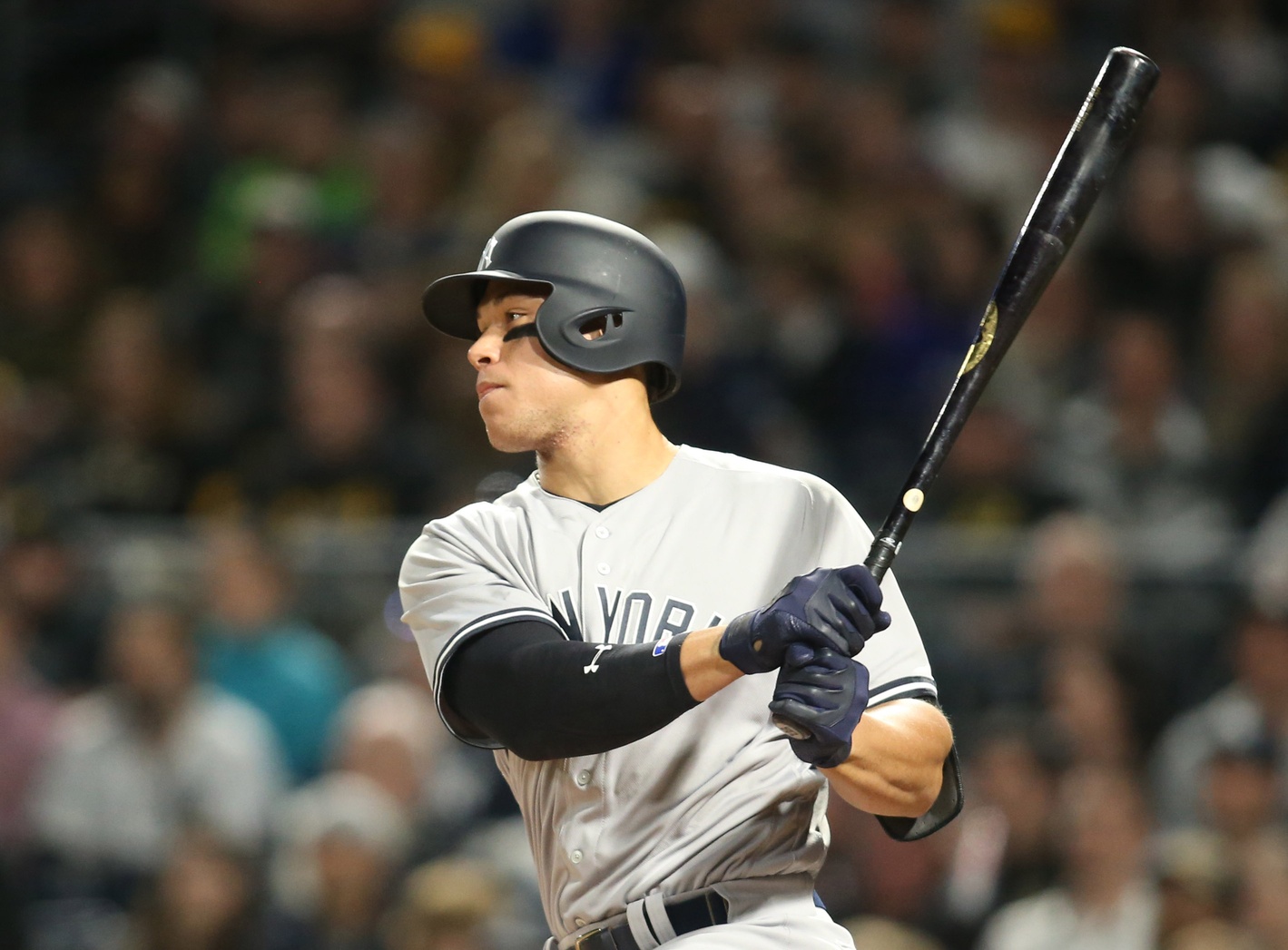The method sports fans use to prepare themselves for a new generation of prospects is to draw comparisons. We do it all the time– maybe even too much. Comparisons are crude, inaccurate and based on so many subjective factors that we often blur the line between performance and aesthetic comps.
Every short, hard-nosed middle infielder is Dustin Pedroia. Every power bat with a strikeout problem is Chris Carter. Every high-ceiling outfielder with the injury bug is Grady Sizemore. The comparisons inevitable because of how we choose to inform people about players they’ve never seen. That is where the inefficiency exists among the baseball community.
When you’re talking baseball with anybody on this site or in the Baseball Prospectus universe, you generally don’t need player comps. There is a good chance that that crowd will know who Kyle Higashioka is or which two players are platooning in left field for the San Francisco Giants. We don’t need every player to be qualified with “a better/worse version of _____”.
When speaking to the general baseball-watching public about a player they’ve never seen, but desire to know about, comparisons are the easiest way to draw an imaginary profile of said player in their minds. There is absolutely nothing wrong with that, it’s simply a refined form of communication, which desires to be efficient. Turmoil ensues when the two worlds meet.
If an educated baseball fan hears a comparison between Aaron Judge and Giancarlo Stanton, their immediate reaction is to cite the 800-game gap in major league playing time or point out the reasons the comparison is wrong. This is a fair point, but what if the comparison is merely to draw a mental image?
Watch any footage of Judge’s swing at the minor league level (like this one) and it’s strikingly similar to Stanton’s at any level (right here). Even if you see discrepancies between the two, the reality is that Judge’s swing is more like Stanton’s than a multitude of other right-handed bats. If you put Stanton in a pool with a plethora of other players at the major league level, more likely than not you’re going to find Judge and Stanton syncing up more than you would expect from all the initial comparison push-back.
Miguel Cabrera’s swing (seen here) is pretty different than either Stanton’s or Judge’s. Cabrera is much more fluid in setting up his hands, syncing his load and lower body earlier as he awaits the pitch, similar, but even less exaggerated than a player like Josh Donaldson’s rhythm (seen here). This comes from a rotational style of hitting, where the hips and lower body are involved more than if a player were to employ a linear style of hitting. Some simple YouTube searching gets you to this exact difference, and explains rotation versus linear swings pretty darn well.
Mookie Betts, as shown in that YouTube-sourced video, hits with this linear approach (here). It’s direct, tends to produce line drives and utilizes much more of the upper body from the hands to the shoulders.
If you were to ask somebody which player pair is more alike — Judge and Betts or Judge and Donaldson — I have a feeling many may lean towards the Blue Jays’ slugger with similar perceived power. But the answer to this question can just as easily be Betts. Going back to our linear versus rotational style of hitting, Judge and Betts both take direct, linear paths to the ball from a similar plane. Their load is quick, simple, and they generate a good amount of their power from hard-hit line drives.
When you venture into performance territory, the comparisons become a whole different story. Take, for example, who Baseball Prospectus currently lists as comparable players for Judge.
I would guess not many people know who 80 percent of these players are. Sure, you might recognize the name Matt Joyce, but did you know that he’s a lefty who signed a two-year, $11 million contract with the Athletics in the offseason? Or that Scott Schebler is actually only 26 years old and produced a 162-game pace of about 2.2 WARP; which would’ve been higher than Albert Pujols and Andrew McCutchen in 2016?
While Judge is making projection models look a bit silly at the moment, the most important thing has nothing to do with the long ball. It’s all about the plate discipline. I’ll spare you the deep dive (which Andrew Gargano has already done), but Judge has gone from a 40-plus percent strikeout player to what seems like a 25 percent strikeout player in one offseason. His swinging strike rate has fallen by nearly ten percentage points, which is astounding for his age, drawing comparisons to one of the most impressive improvements from 2015 to 2016 that I saw — Kris Bryant, who cut his strikeout rate by eight percentage points and watched his batting average and on-base/slugging percentages migrate north as a result. Judge’s change is in the same realm as Bryant’s, just not yet across a big enough sample size.
As we circle back to our Stanton performance comp, I think I may be coming around to the fact that they aren’t actually that similar. It took Stanton six seasons of 100+ games to post a strikeout rate below 26 percent. Judge is sitting on a 25.4 percent strikeout rate as he heads towards the 70-plate appearance mark this week.
Keep a close eye on this number moving forward. Soon Judge may be the one we’re saying is in a league of his own.
Lead photo: Charles LeClaire / USA Today Sports

